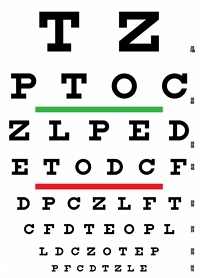EYE CHART BY HOLOGRAPHIC TECHNIQUE
|
Description |
An optical procedure is presented for evaluating depth vision by using eye charts produced by holographic technique. The procedure allows for the control of the secondary guides, as well as the quantification, in seconds of arc, of the binocular depth vision and the monocular spatial discrimination threshold, regardless of the depth perception capacity of the subject.
|
How does it work |
It provides a diagnosis of the depth perception capacity of the subject closest to the actual vision conditions. It comprises the following stages:
1. Selection of objects. Objects can be punctual or extensive, of materials that reflect or transmit light as methacrylate. The model is mounted on a rectified base of a metallic material.
2. A hologram of the object is made with transmission or reflection log geometry.
3. The illuminated replica hologram is presented to the subject at the appropriate distance with strict control of the angles perceived by each eye for depth vision measurements between 10" to 2500" eliminating the reference guides in the holographic eye charts for measurement regardless of depth perception capacity.
|
Advantages |
The main advantage is to obtain a measure closer to the real conditions of the embossed vision without any risk to the environment neither in its use nor in its elaboration.
|
Where has it been developed? |
It has been elaborated in the mechanical workshop of the Faculty of Physics of the university Complutense of Madrid after the dispatch of the design of the inventors of the Faculty of Optics and Optometry for its execution. This technology is developed as an invention patent in 2007.
|
And also: |
In 1993, it was developed in the Department of Optometry and vision of the Complutense University of Madrid, using the prototype for the clinical measures with students of the School of Optics and Optometry. He received the first international prize of the Optical Expo of 1992 to the best innovative solution.
|
Contact |
|
© Office for the Transfer of Research Results – UCM |
|
PDF Downloads |
|
Classification |
|
Responsible Researcher |
Ricardo Bernárdez Vilaboa: rbvoptom@ucm.es
Department: Optometry and vision
Faculty: Optics and Optometry



